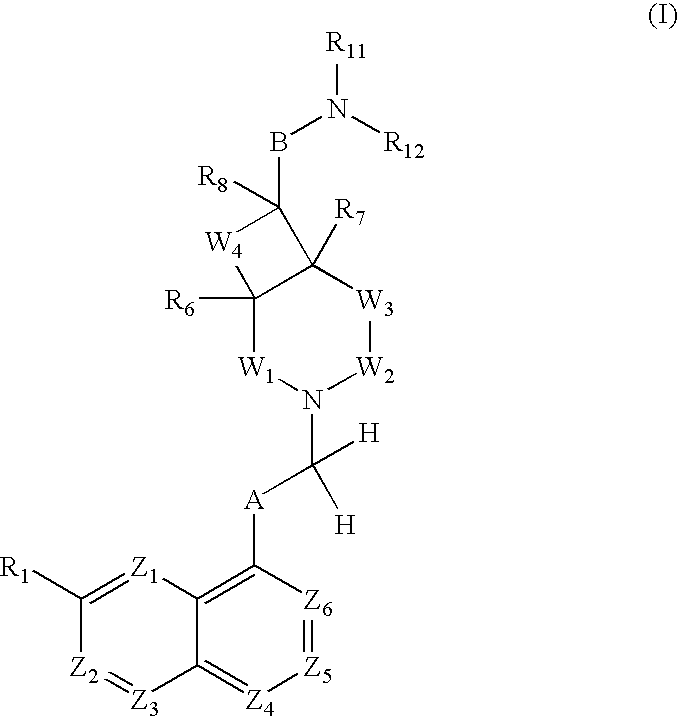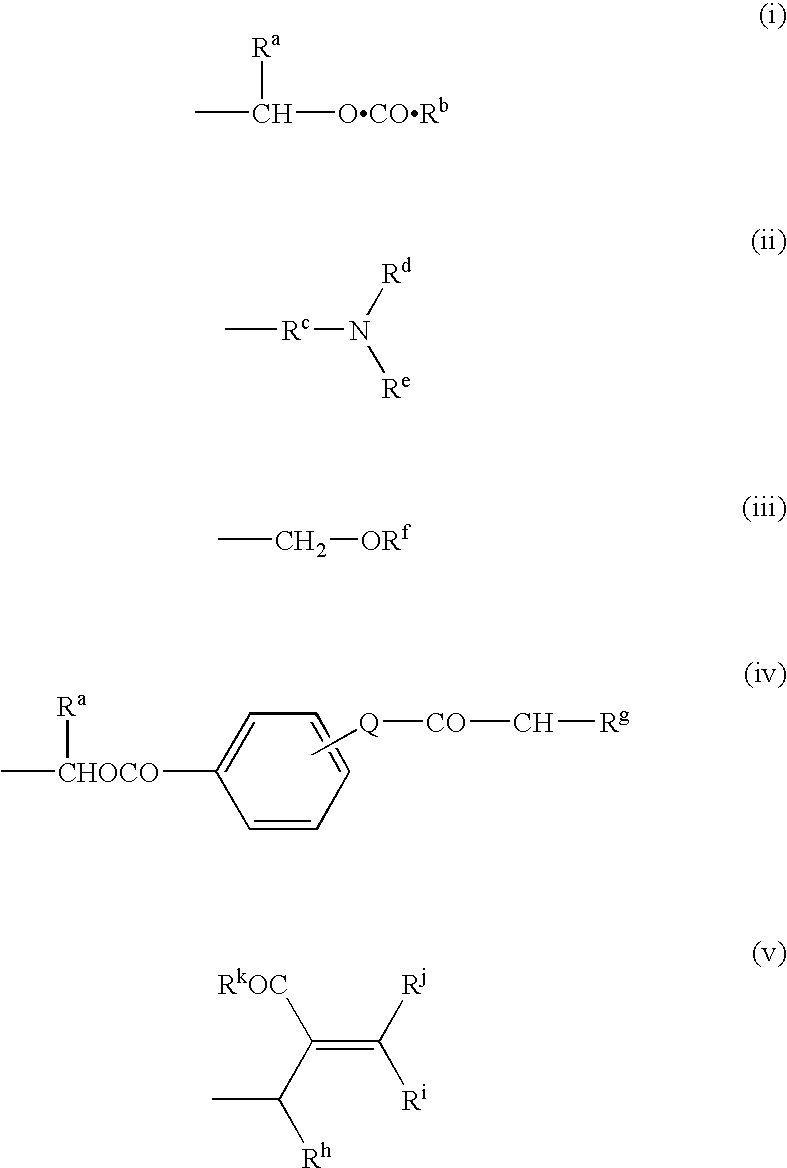Antibacterial Agents
a technology of antibacterial agents and active ingredients, applied in the field of compounds, can solve the problems of pathogens resistant to known antibiotic therapy becoming a serious global healthcare problem
- Summary
- Abstract
- Description
- Claims
- Application Information
AI Technical Summary
Benefits of technology
Problems solved by technology
Method used
Image
Examples
preparation 1
[0126]
Preparation of 8-ethenyl-7-fluoro-2-(methyloxy)-1,5-naphthyridine
(a) (2-[(6-Methoxypyridin-3-ylamino)methylene]malonic acid diethyl ester
[0127] A solution of 5-amino-2-methoxypyridine (Aldrich, 100 g, 0.806 mole) and diethyl ethoxymethylenemalonate (Aldrich, 163 mL, 0.806 mole) in EtOH (1 L) was heated at reflux for 4 h, then was cooled to RT. Concentration to dryness gave the title compound (238 g, quantitative).
(b) 6-Methoxy-4-oxo-1,4-dihydro-[1,5]naphthyridine-3-carboxylic acid ethyl ester
[0128] Dowtherm A (Fluka, 500 mL) was brought to boiling (250° C.) in a 2 L 3-neck flask fitted with a still-head and a reflux condenser. 2-[(6-Methoxypyridin-3-ylamino)methylene]malonic acid diethyl ester (100 g, 0.34 mole) was added portion-wise over 5 min. The solution was heated at reflux for an additional 15 min, allowing some solvent to distil over. The resulting solution was cooled to room temperature and diluted with hexane (750 mL). The mixture was cooled in ice for 1 h, then ...
preparation 2
[0136]
Preparation of 3-Oxo-3,4-dihydro-2H-pyrido[3,2-b][1,4]thiazine-6-carboxaldehyde
(a) Methyl 3-oxo-3,4-dihydro-2H-pyrido[3,2-b][1,4]thiazine-6-carboxylate
[0137] A solution of ethyl 2-mercaptoacetate (1.473 mL) in DMF (48 mL) was ice-cooled and treated with sodium hydride (540 mg of a 60% dispersion in oil). After 1 h methyl 6-amino-5-bromopyridine-2-carboxylate (3 g) (T. R. Kelly and F. Lang, J. Org. Chem. 61, 1996, 4623-4633) was added and the mixture stirred for 16 h at room temperature. The solution was diluted with EtOAc (1 L), washed with water (3×300 mL), dried and evaporated to about 10 mL. The white solid was filtered off and washed with a little EtOAc to give the ester (0.95 g); LC / MS (APCI−) m / z 223 ([M−H]−, 100%).
(b) 3-Oxo-3,4-dihydro-2H-pyrido[3,2-b][1,4]thiazine-6-carboxylic acid
[0138] A solution of Methyl 3-oxo-3,4-dihydro-2H-pyrido[3,2-b][1,4]thiazine-6-carboxylate (788 mg) in dioxan (120 ml) / water (30 mL) was treated dropwise over 2 h with 0.5M NaOH solution (...
preparation 3
[0141]
Preparation of 3-Oxo-3,4-dihydro-2H-pyrido[3,2-b][1,4]oxazine-6-carboxaldehyde
(a) 2-Bromo-5-hydroxy-6-nitropyridine
[0142] 3-Hydroxy-2-nitropyridine (20 g, 0.143 mole) was dissolved in methanol (400 mL) and a solution of 25% sodium methoxide in methanol (33 mL, 0.13 mole) was added at room temperature. The mixture was stirred for 30 min, then was cooled to 0° C., and bromine (7.2 mL, 0.14 mole) was added slowly. The reaction was stirred at 0° C. for 30 min, then was quenched with glacial AcOH (2.5 mL). The solvent was removed in vacuo to afford material (30 g, 96%), which was used without further purification: MS (ES) m / z 219.0 (M+H)+.
(b) Ethyl (6-bromo-2-nitro-pyridin-3-yloxy)acetate
[0143] 2-Bromo-5-hydroxy-6-nitropyridine (30 g, 0.14 mole) was suspended in acetone (200 ml), and potassium carbonate (39 g, 0.28 mole) was added, followed by ethyl bromoacetate (15.7 ml, 0.14 mmole). The reaction was heated at reflux for 10 hr, then was cooled to room temperature and diluted w...
PUM
| Property | Measurement | Unit |
|---|---|---|
| pH | aaaaa | aaaaa |
| pH | aaaaa | aaaaa |
| pH | aaaaa | aaaaa |
Abstract
Description
Claims
Application Information
 Login to View More
Login to View More - R&D
- Intellectual Property
- Life Sciences
- Materials
- Tech Scout
- Unparalleled Data Quality
- Higher Quality Content
- 60% Fewer Hallucinations
Browse by: Latest US Patents, China's latest patents, Technical Efficacy Thesaurus, Application Domain, Technology Topic, Popular Technical Reports.
© 2025 PatSnap. All rights reserved.Legal|Privacy policy|Modern Slavery Act Transparency Statement|Sitemap|About US| Contact US: help@patsnap.com



